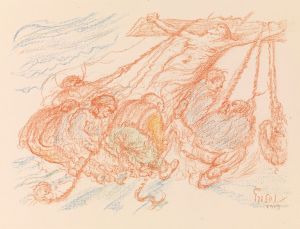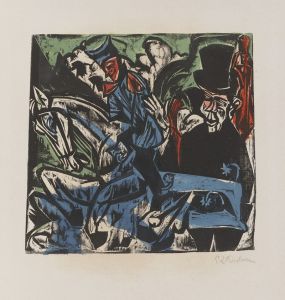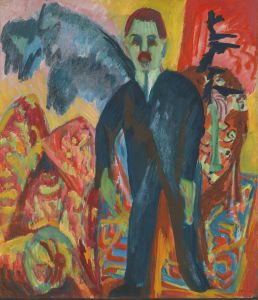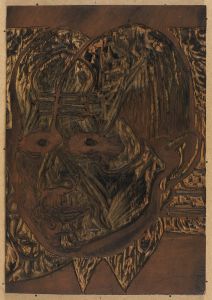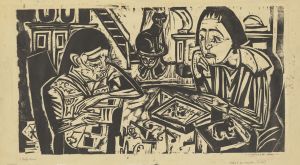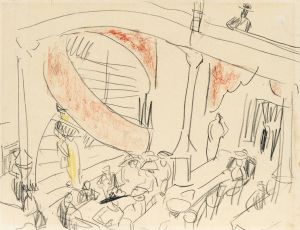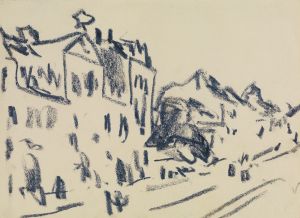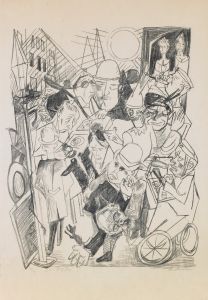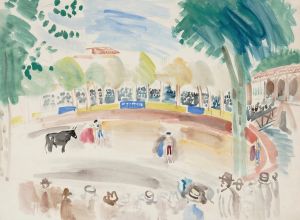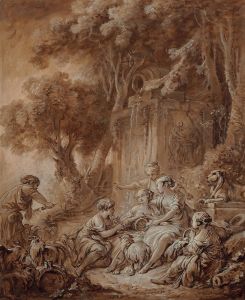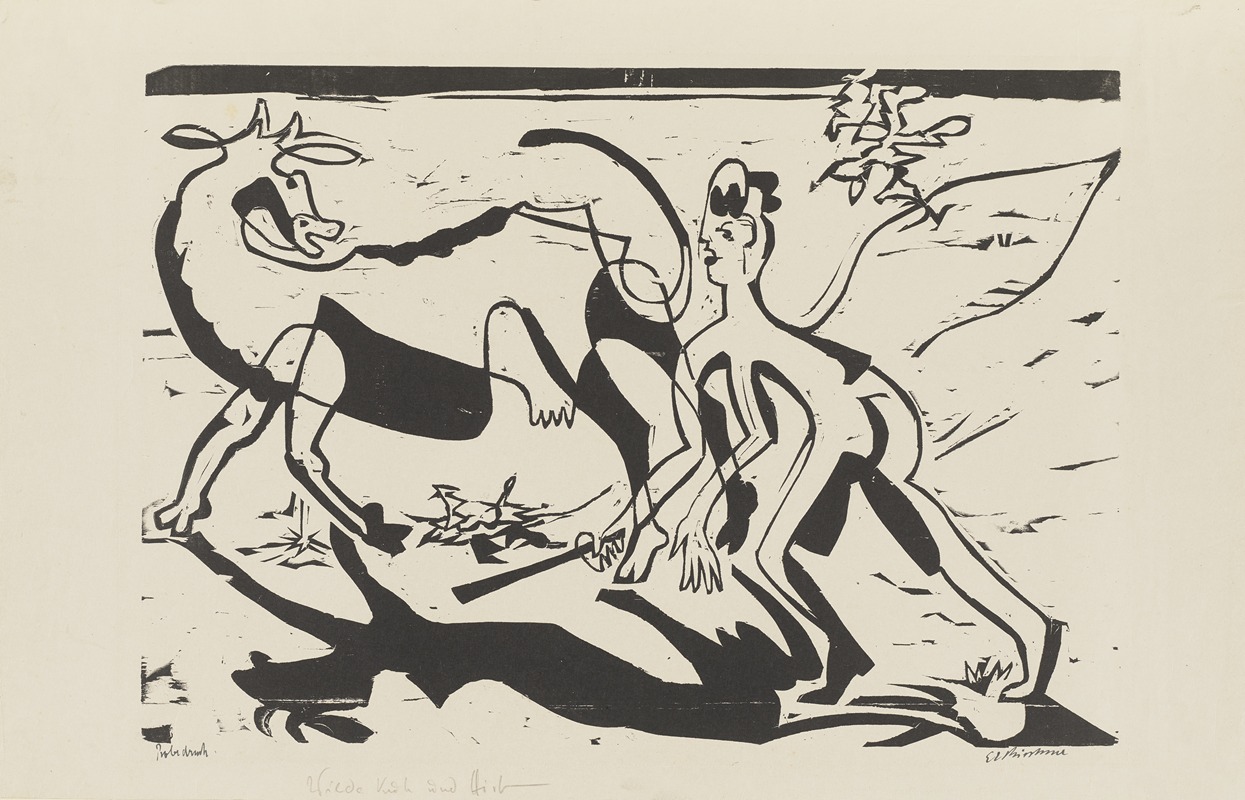
Wilde Kuh und Hirt
A hand-painted replica of Ernst Ludwig Kirchner’s masterpiece Wilde Kuh und Hirt, meticulously crafted by professional artists to capture the true essence of the original. Each piece is created with museum-quality canvas and rare mineral pigments, carefully painted by experienced artists with delicate brushstrokes and rich, layered colors to perfectly recreate the texture of the original artwork. Unlike machine-printed reproductions, this hand-painted version brings the painting to life, infused with the artist’s emotions and skill in every stroke. Whether for personal collection or home decoration, it instantly elevates the artistic atmosphere of any space.
Ernst Ludwig Kirchner was a prominent German expressionist painter and one of the founding members of the influential art group Die Brücke (The Bridge), which played a crucial role in the development of modern art in the early 20th century. Kirchner's work is characterized by its bold colors, dynamic compositions, and emotive intensity, often reflecting the tumultuous socio-political landscape of his time.
"Wilde Kuh und Hirt" (Wild Cow and Herdsman) is one of Kirchner's works that exemplifies his distinctive style and thematic interests. Although specific details about this particular painting are limited, it can be contextualized within Kirchner's broader oeuvre and the expressionist movement.
Kirchner was deeply influenced by the rapid changes in society and the urban environment of early 20th-century Germany. His art often depicted scenes of city life, landscapes, and figures, capturing the psychological and emotional undercurrents of modern existence. The expressionist movement, to which Kirchner belonged, sought to convey subjective emotions and experiences rather than objective reality, often through exaggerated forms and vibrant colors.
In "Wilde Kuh und Hirt," Kirchner likely explores themes of nature and humanity's relationship with it, a subject that appears in various forms throughout his work. The depiction of a wild cow and a herdsman suggests a scene of pastoral life, which contrasts with the urban settings frequently found in Kirchner's paintings. This juxtaposition might reflect the tension between the natural world and the encroaching industrialization and urbanization of the period.
Kirchner's technique often involved bold brushstrokes and a vivid color palette, which he used to evoke emotional responses from the viewer. His compositions were dynamic, sometimes bordering on the abstract, which allowed him to express the inner turmoil and anxiety of modern life. The use of color and form in "Wilde Kuh und Hirt" would likely follow this pattern, emphasizing the raw energy and emotion of the scene.
Throughout his career, Kirchner faced numerous personal and professional challenges, including the impact of World War I and the subsequent political upheavals in Germany. These experiences influenced his work, leading to a darker and more introspective phase in his later years. Despite these difficulties, Kirchner remained a pivotal figure in the expressionist movement, and his legacy continues to influence artists today.
While specific information about "Wilde Kuh und Hirt" is scarce, understanding Kirchner's artistic context and the broader themes of his work provides insight into the possible interpretations of this painting. Kirchner's ability to capture the essence of his time through expressive and innovative techniques ensures his place as a significant figure in the history of modern art.






